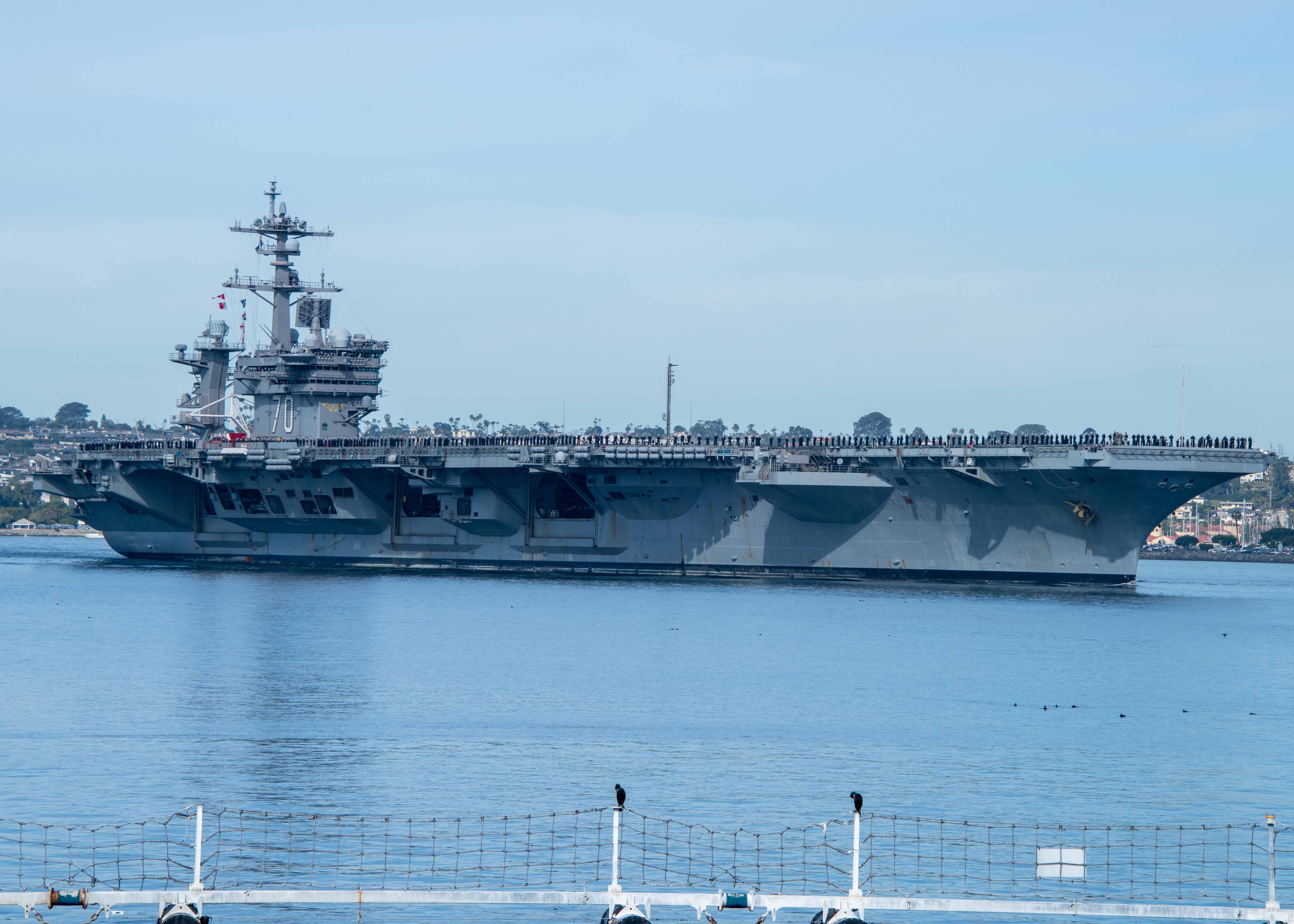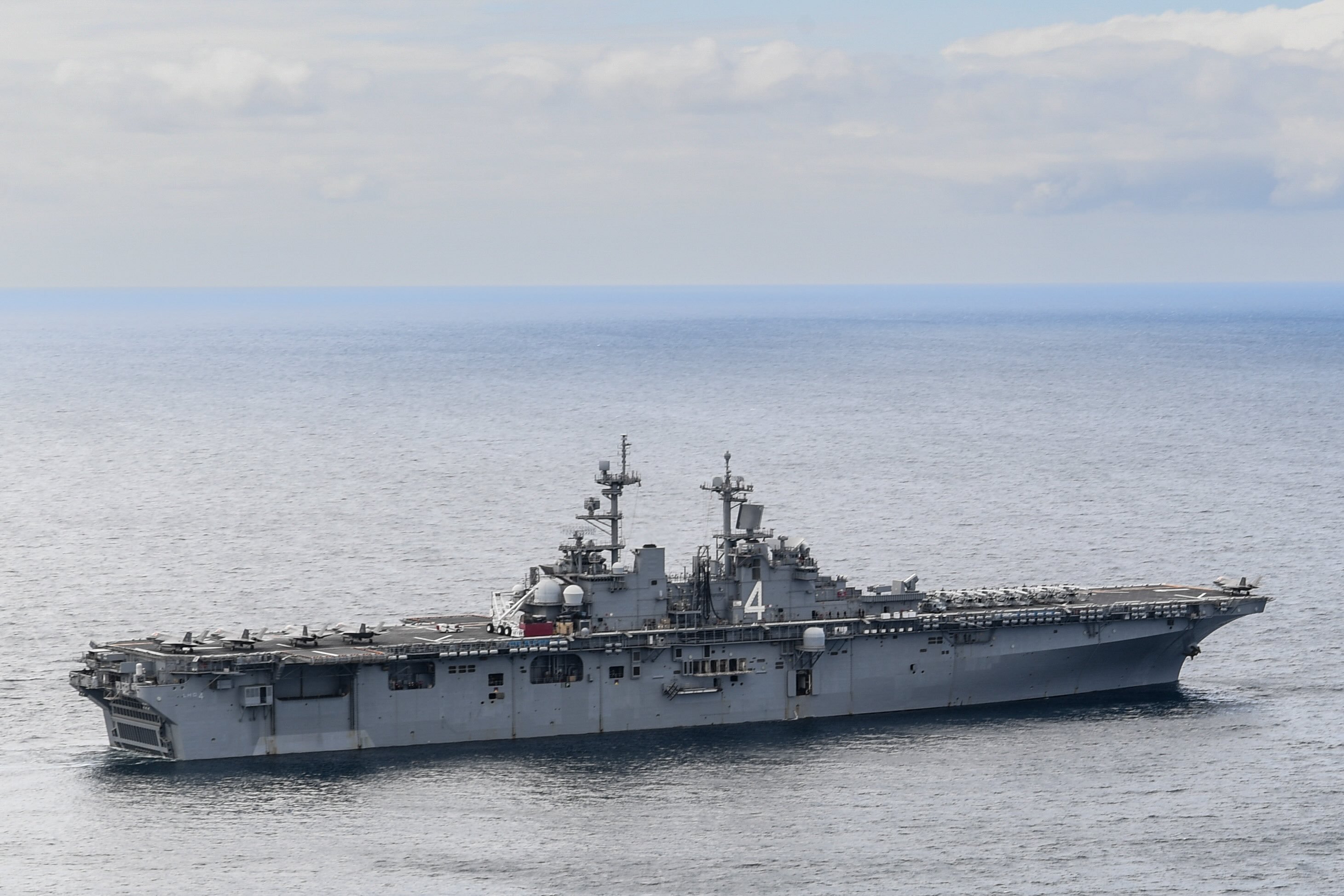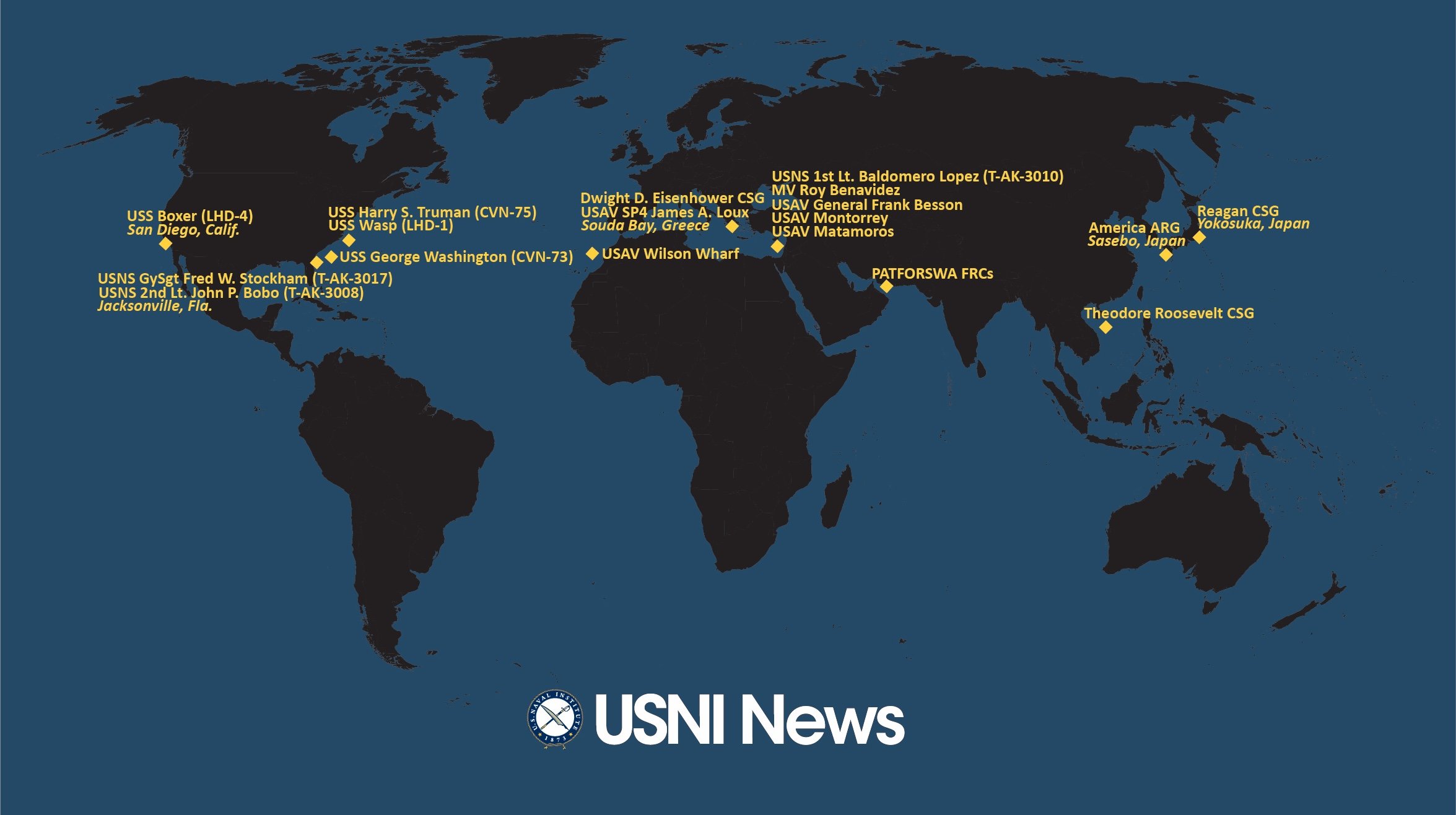
The Japan Maritime Self-Defense Force will dispatch both its Izumo-class big decks on their largest deployment to date, officials said on Tuesday.
Previous Indo-Pacific Deployments featured single Izumo or Hyuga-class big decks for four to five months.
Meanwhile, the Theodore Roosevelt Carrier Strike Group (CSG) wrapped up drills with the JMSDF on Saturday. The German military on Tuesday revealed that the Carl Vinson CSG will take part in the Rim of the Pacific 2024 exercise near Hawaii this summer.
A total of six surface ships – destroyer carriers JS Izumo (DDH-183) and JS Kaga (DDH-184), destroyers JS Ariake (DD-109) and JS Haguro (DD-180), amphibious landing ship JS Kunisaki (LST-4003) and frigate JS Noshiro (FFM-3) – divided into 4 surface mission units with embarked JMSDF Special Boarding Units, two P-1 Maritime Patrol Aircraft (MPA) divided into two air units and an undisclosed number of submarines will deploy separately in a 7-month period beginning May 3 and ending on Dec. 15, according to a JMSDF announcement.
“The JMSDF will conduct Indo-Pacific Deployment 2024 (IPD24) in order to realize a ‘Free and Open Indo-Pacific,’” reads the announcement.
The deployment will put the JMSDF with allied navies through a series of regional exercises, officials said.
The first surface unit includes Kunisaki and its integral two Landing Craft Air Cushions under the command of Rear Adm. Izuru Ikeuchi, the commander of the JMSDF Mine Warfare Force. The JMSDF’s amphibious ships are all under the Mine Warfare Force. The second surface unit includes Izumo, Ariake and Haguro under the command of Escort Flotilla 3 commanding officer Rear. Adm. Kazushi Yokota, while Noshiro forms the third surface unit headed by Noshiro’s commanding officer, Cdr. Tetsunobu Hori. Kaga rounds out IPD 24 as the fourth surface unit, headed by Kaga’s commanding officer, Capt. Shusaku Takeuchi.
Countries visited during the deployment will include Australia, Fiji, French Polynesia, India, Kiribati, Palau, Papua New Guinea, the Philippines, the Marshall Islands, Micronesia, Tonga, the United States and Vanuatu. The visit to Tonga will include participation in the Tonga Royal Navy’s 50th Anniversary Fleet Review and Japan is currently in discussions with other countries for additional visits. Exercises that IPD 24 units will participate in are Marara, RIMPAC, Pacific Dragon, Pacific Vanguard, Kakadu, Pacific Partnership and Malabar.
Marara is a French-led humanitarian aid and disaster relief exercise that will take place in French Polynesia, while Kakadu is the Royal Australian Navy’s flagship regional international engagement held in Australia biennially. RIMPAC 2024 is the U.S. Pacific Fleet-led multinational exercise scheduled to take place this summer around Hawaii, while Pacific Dragon is a U.S.-led biennial multinational air and missile defense exercise that normally takes place after RIMPAC to leverage participation from partner nation ships already nearby for RIMPAC. The last Pacific Dragon exercise, held in 2022, featured the RAN, the Royal Canadian Navy, the JMSDF and the Republic of Korea Navy (ROKN).
Pacific Vanguard is an annual U.S.-Navy led exercise for partner nations to strengthen skills through drills ranging from anti-submarine warfare operations to live-fire missile engagements. Pacific Partnership is the U.S. Pacific Fleet-led annual multilateral humanitarian assistance exercise conducted in the Indo-Pacific. Malabar is the Quad’s – the informal alliance between Australia, India, Japan the U.S. – main naval exercise.
The first special modification work on the destroyer ”KAGA” was completed as planned on March 29.
The JMSDF will continue to systematically carry out the necessary modifications to the “IZUMO” class destroyer in order to acquire the operational capability of the F-35B. pic.twitter.com/JTaLkjRWu5— Japan Maritime Self-Defense Force (@jmsdf_pao_eng) April 6, 2024
Kaga’s participation in IPD 24 is the ship’s first deployment since it completed the first stage of modification work last month to enable the helicopter destroyer to operate F-35B fighters. Work on Kaga also included modifying the bow’s shape to a square to better facilitate F-35B operations. Izumo’s bow will get modified when it enters the second stage of the update. Kaga is expected to be the Izumo-class carrier that will conduct F-35B integration trials on the U.S. East Coast in November this year.
As the JMSDF prepares to begin its Indo-Pacific deployment, Canada kicked off its annual Indo-Pacific mission, Operation Horizon, on Sunday with the departure of frigate HMCS Montreal (FFH336) from Halifax. Montreal was originally scheduled to depart on Friday, but a Canadian Ministry of Defence news release stated that the crew needed to repair a system problem before departing. Montreal is the first of three RCN ships that are deploying annually under Operation Horizon in support of Canada’s Indo-Pacific strategy, with the deployment expected to last six months.
Meanwhile, after wrapping up trilateral drills with the ROKN and JMSDF in the East China Sea on Friday, the Theodore Roosevelt CSG conducted bilateral drills from Friday to Saturday with the JMSDF throughout the East China Sea, to south of the main island of Shikoku, according to a JMSDF news release issued Monday. Carrier USS Theodore Roosevelt (CVN-71), destroyers USS Russell (DDG-59) and USS Daniel Inouye (DDG-118), along with a U.S. Navy P-8A Poseidon aircraft carried out tactical exercises with JMSDF destroyer Ariake, with all four ships previously taking part in the trilateral drills, according to the JMSDF release.
In other developments, the German Armed Forces disclosed that carrier USS Carl Vinson (CVN-70) will be the U.S. carrier taking part in RIMPAC this summer.

In an interview released on Tuesday, Lt. Col. Marco Brunhofer of 73 Tactical Air Wing “S,” who will lead the German Air Force contingent of three Eurofighter fighters and an A400M fighter aircraft, stated that his contingent will participate in RIMPAC from July 27 through 30. Its activities will include integrating into a multinational aircraft carrier force that will protect Carl Vinson, though his aircraft will deploy from land and receive support via mid-air refueling from the A400M, Brunhofer said.
“In varying scenarios, we will practice both protecting the aircraft carrier against enemy fighter aircraft and attacking these enemy fighter aircraft. In addition, we will simulate an attack on enemy forces on a group of islands with numerous radar positions,” he said in the interview.
Brunhofer also stated that for the strike missions, his aircraft will be part of a composite air operation with U.S Navy, Air Force and Marine Corps aircraft, along with aircraft from other partner nations participating in RIMPAC. Following RIMPAC, the German fighters will conduct Dissimilar Air Combat Training with the Hawaii Air National Guard from July 31 through Aug. 5.
The Carl Vinson CSG returned to San Diego after a four-month deployment to the Indo-Pacific on Feb. 23, reported USNI News.





